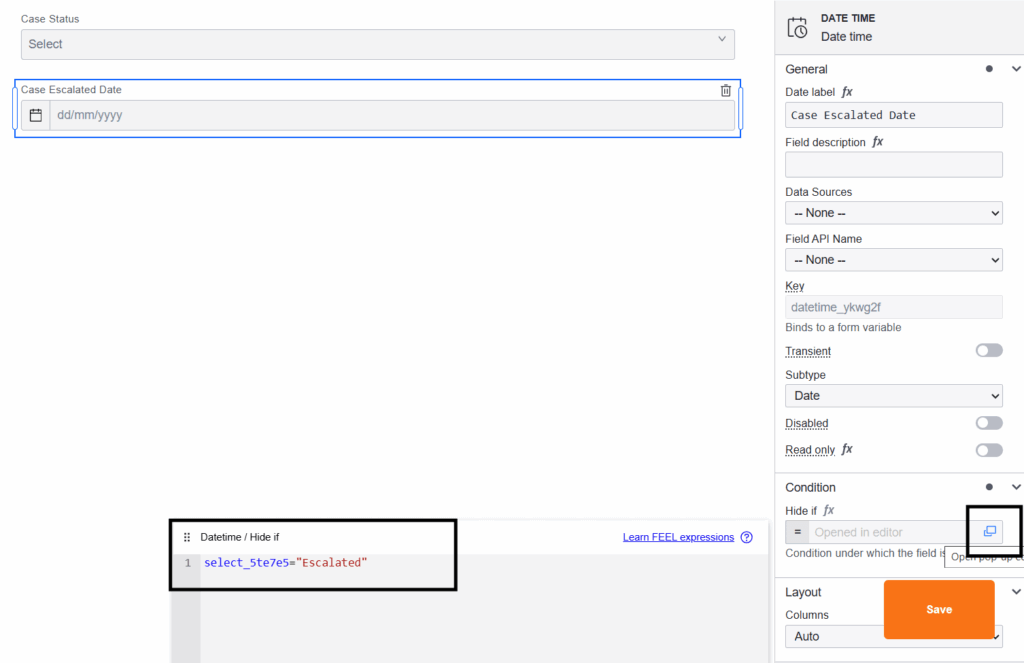Web forms provide Date time element to capture Date, time or Date & time. Below are the settings you see after adding Date time element to the web form.

General
- Date label : Label of the Date time form element you wish to capture through web form.
- Field Description : A description of the Date time form element, typically providing details on the kind of data it captures.
- Data Sources : Create Data Sources to extract data from Salesforce. These Data Source will appear here. Let’s say if you want to display list of cases(with all the information like Case Description, Created Date, Status, Priority and so on) which you have created. You need to fetch that data by creating SOQL Data Source on Case object and supply the data to the form using this Data Source.
- Field API Name : Select the Data Source field to map your datetime form element here.
- Key : Each form element you add to your web form has a unique, automatically generated value. That is visible here.
- Transient : If enabled, field will not be saved in Salesforce after submitting the Web Form.
- Subtype : Date time element can capture Date, time or Date & time. Subtype hold these options.
- Use 24h : For Time and Date & Time, you will see this option. If this is checked, then 24 hour time format will be considered.
- Disabled : If you enable this, then you cannot edit the field, and data will not be submitted. Takes precedence over read only.
- Read Only : If you enable this, then you cannot be edit the field, and data will still be submitted.
Condition
- Hide if: If you need to hide your Date time input under certain conditions, then you can mention such conditions here. For example, show Case Escalated Date form element only when Case Status form element is “Escalated”. Open Hide if editor of Case Escalated Date form element and start typing the unique key which is generated for Case Status form element, and add the condition as shown below. If your expression is invalid, then editor will through error.

Layout
- Columns: By default, this is Auto, meaning that you divide the form based on the number of form elements you add in a single row. You can change it according to your business needs, so that you divide the form into the number of columns mentioned here.
Serialization
- Time format : You will see this option for Time and Date & Time. You can choose UTC offset, UTC normalized or No timezone.
- UTC offset: The UTC offset indicates how many hours ahead or behind a particular time zone is from UTC. This offset helps determine the local time in any given region based on UTC.
A positive UTC offset means the time zone is ahead of UTC. UTC+3 means the time is 3 hours ahead of UTC.
A negative UTC offset means the time zone is behind UTC. UTC-5 means the time is 5 hours behind UTC. - UTC normalized: Adjusting or converting time data into a standard format based on UTC, providing consistency across systems and platforms.
For example: If an event happens at 3:00 PM in New York (UTC-5), then the normalized time in UTC would be 8:00 PM (UTC+0).
Constraints
- Time interval : You will see this option for Time and Date & Time. For example, if you select 30min, then the time field will show the time options with 30min interval.
- Disallow past dates : You will see this option for Date and Date & Time. If checked, then the user cannot select past dates.
Validation
- Required : If your Date time input is mandatory for your form to save, then enable this.





